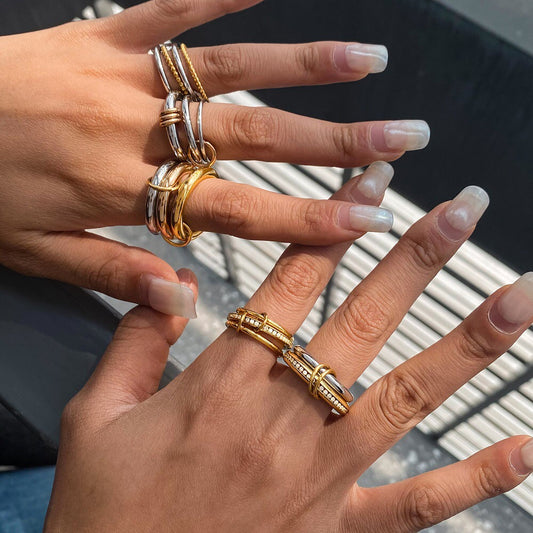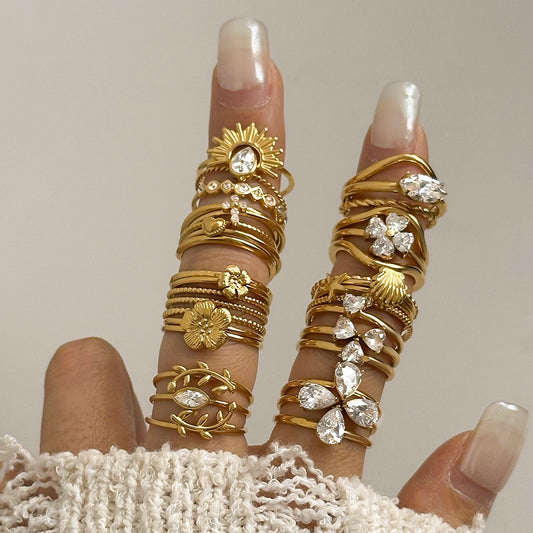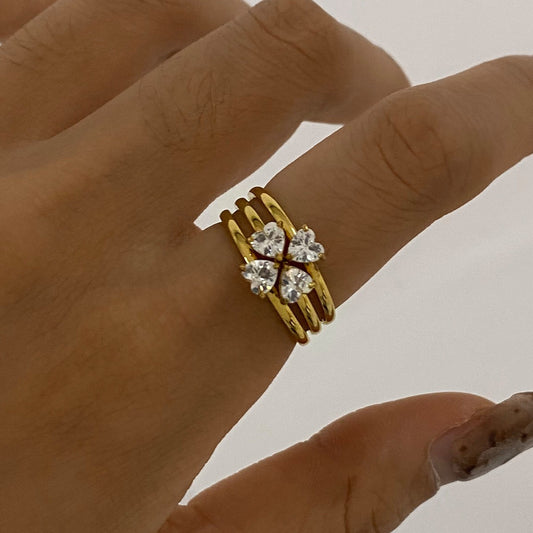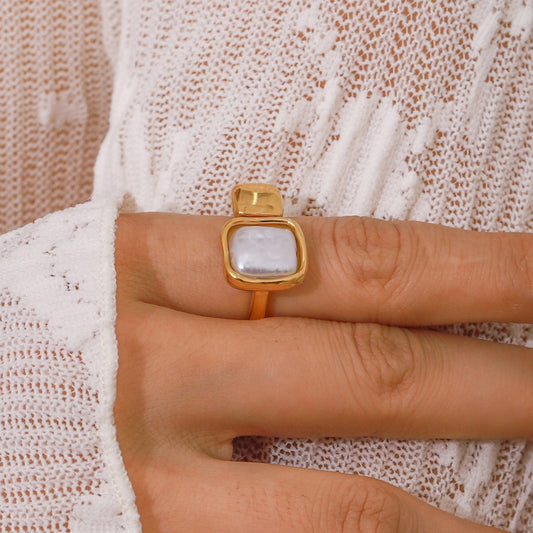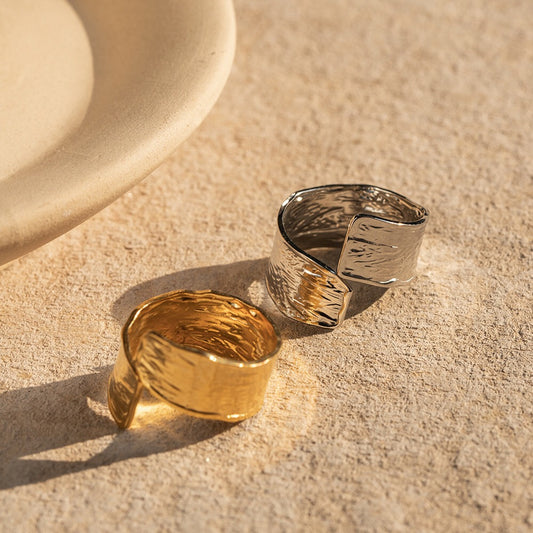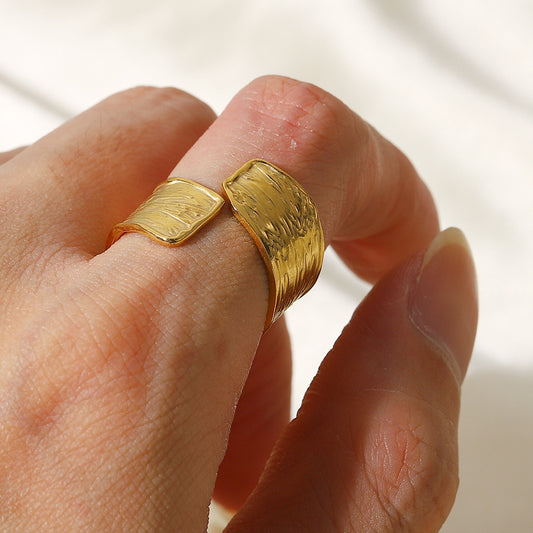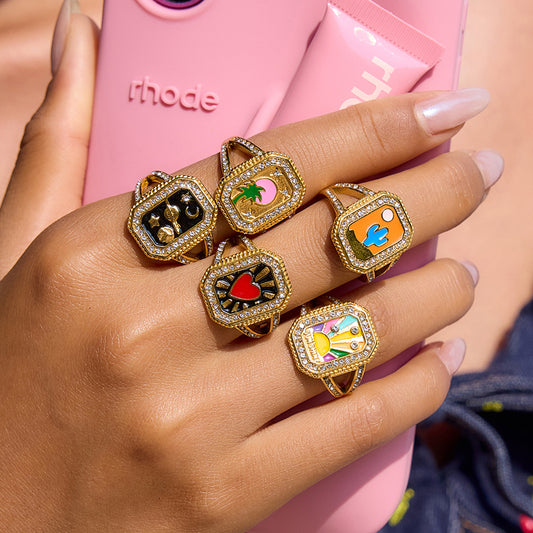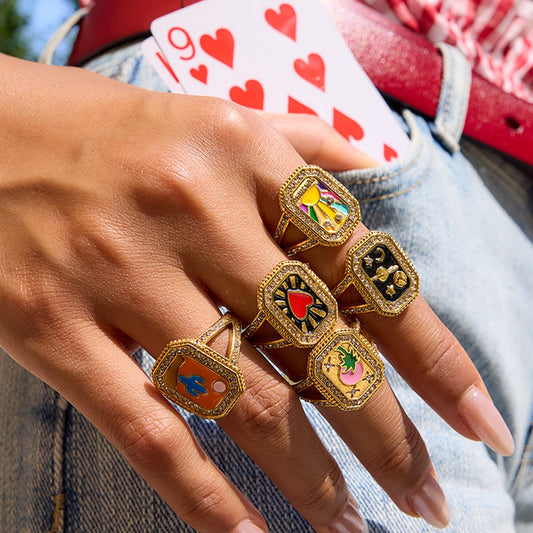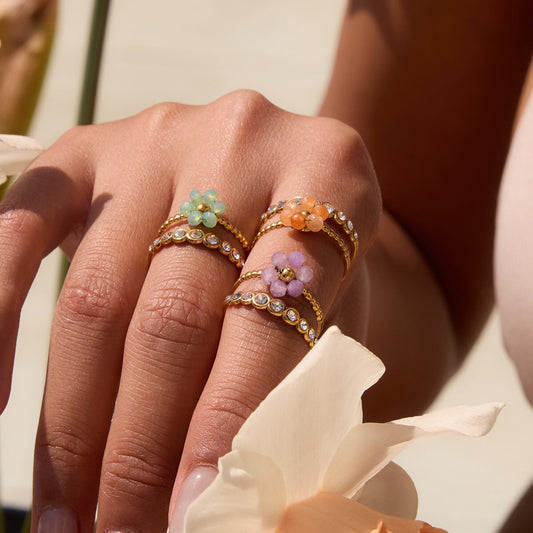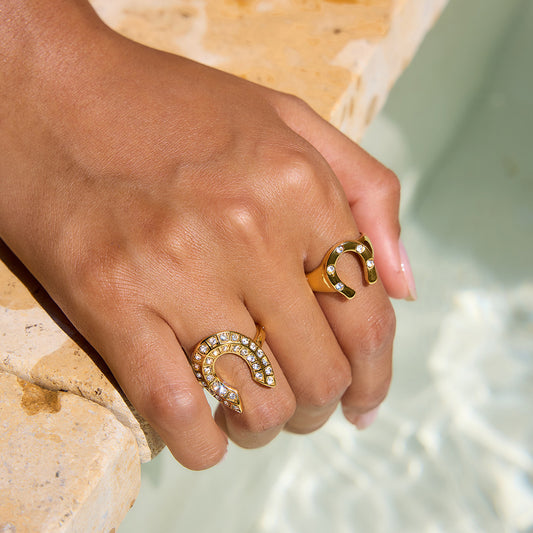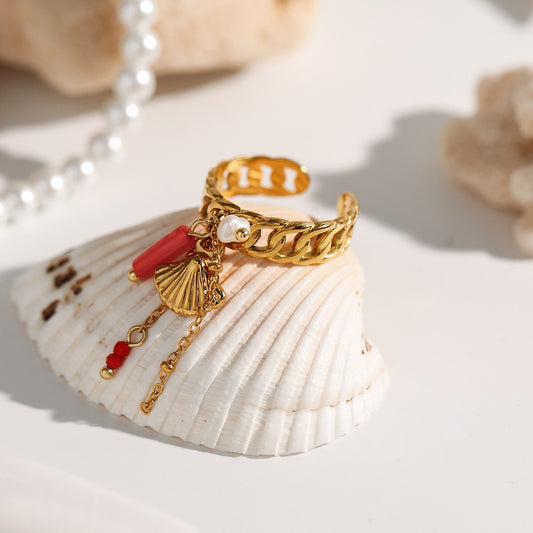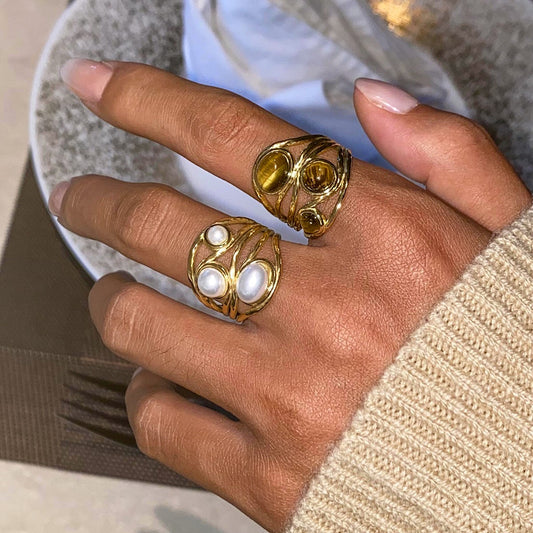How Do I Measure My Ring Size? If you’ve ever bought a ring that was too tight to slip on or too loose to stay on your finger, you know how crucial accurate ring size measurement is. Whether you’re shopping for a custom engagement ring, a daily-wear band, or a gift for a loved one, getting the size right ensures comfort and avoids the hassle of returns or resizing. The ring jewelry market is the largest segment of the global jewelry market, representing approximately 32% of sales, driven by demand for engagement and wedding rings. The good news? Measuring your ring size (or someone else’s) is simple with the right tools and steps. In this guide, we’ll break down exactly how to measure ring size at home, with methods for every scenario—from using household items to professional tools.

What You’ll Need to Measure Ring Size
Before you start, gather a few basic tools to ensure accuracy. Most methods use items you already have at home, while others rely on affordable, easy-to-find tools:
Household Items (No Special Tools Needed)
-
A thin strip of paper (1/4 inch wide, 6 inches long) or a piece of string/floss (unwaxed, to avoid slipping).
-
A ruler with millimeters (mm) or inches (most ring size charts use mm for precision).
-
A pen or pencil to mark measurements.
-
A pair of scissors (if using paper).
Affordable Specialized Tools (Optional but More Accurate)
-
Printable Ring Size Chart: Free templates available online from jewelers like Pandora, Blue Nile, or Zales—print, cut, and use to measure existing rings or your finger.
-
Plastic Ring Sizer: A flexible band with marked sizes (1–13 for US sizes) that slips over your finger—available for \(5–\)10 on Amazon or at craft stores.
-
Metal Ring Sizer Set: A set of solid metal rings in different sizes (great for comparing to existing rings)—sold at jewelry supply stores or online.

4 Easy Methods to Measure Ring Size at Home
Method 1: Measure an Existing Ring (Best for Known Sizes)
If you or the person you’re shopping for already owns a well-fitting ring (for the same finger), this is the simplest and most accurate method. Here’s how:
-
Grab the ring and a ruler: Place the ring flat on a table, making sure it’s not tilted (tilting can skew measurements).
-
Measure the inner diameter: Use the ruler to measure the distance across the center of the ring’s inner circle, from one edge to the other. Measure in millimeters (mm)—this is key for matching to size charts.
-
Convert to ring size: Use a US ring size chart (most common in North America) to find your size. For example:
-
16.5mm inner diameter = US size 6
-
17.3mm inner diameter = US size 7
-
18.1mm inner diameter = US size 8
Pro tip: If the ring is a wide band (6mm or thicker), add 1/2 size to your measurement—wide bands fit more snugly than thin ones.
Method 2: Paper/String Method (Best for Measuring Your Finger Directly)
This method works if you don’t have an existing ring and want to measure your finger directly. It’s affordable but requires a steady hand:
-
Prepare the paper/string: Cut a thin strip of paper (1/4 inch wide) or cut a 6-inch piece of string/floss.
-
Wrap around your finger: Slide the paper/string around the base of the finger you want to measure (where rings usually sit). Make sure it’s snug but not tight—you should be able to fit one finger between the paper/string and your skin.
-
Mark the overlap: Use a pen to mark where the end of the paper/string meets the rest of the strip.
-
Measure the length: Lay the paper/string flat and use a ruler to measure the distance from the start to the marked line. Again, measure in millimeters.
-
Convert to size: Use a US ring size chart to find your size. For example:
-
52mm circumference = US size 6
-
54mm circumference = US size 7
-
56mm circumference = US size 8
Pro tip: Measure your finger 2–3 times to ensure consistency—finger size can vary slightly between measurements.

Method 3: Printable Ring Size Chart (Most Convenient for At-Home Use)
Printable charts are a happy medium between household items and specialized tools—they’re free and more accurate than string alone. Here’s how to use one:
-
Find a reliable chart: Download a printable ring size chart from a trusted jeweler (e.g., Blue Nile’s “Printable Ring Sizer” or Zales’ “Ring Size Guide”).
-
Print correctly: Set your printer to “100% scale” or “no scaling”—do NOT use “fit to page,” as this will shrink or stretch the chart. To verify, measure the “test line” on the chart (usually a 2-inch or 50mm line)—if it matches the stated length, the chart is printed correctly.
-
Cut the chart: Cut out the circular “ring sizer” (a hole with size labels) or the strip sizer (a long strip with size marks).
-
Use the circular sizer: Slide an existing ring through the holes until it fits snugly through one—this is the ring’s size.
-
Or use the strip sizer: Wrap the strip around your finger, aligning the arrow with the size marks. The mark where the arrow lands is your size.
Pro tip: If using the strip sizer, wrap it around your finger twice to double-check the size—this reduces error.
Method 4: Plastic Ring Sizer (Most Accurate At-Home Tool)
Plastic ring sizers are cheap, reusable, and mimic the feel of a real ring—making them ideal for first-time buyers. Here’s how to use one:
-
Get the sizer: Purchase a flexible plastic ring sizer (available on Amazon for \(5–\)10) — it looks like a small belt with size numbers (1–13) and a metal buckle.
-
Slide it on your finger: Wrap the sizer around the base of your finger, inserting the end through the buckle to secure it.
-
Adjust for fit: Tighten or loosen the sizer until it’s snug but comfortable—you should be able to slide it on and off with slight resistance (like a well-fitting ring).
-
Read the size: The number aligned with the buckle’s edge is your US ring size.
Pro tip: Keep the sizer on your finger for 1–2 minutes to ensure it’s comfortable—fingers can swell slightly when warm, so this helps avoid a too-tight fit.
Key Tips for Accurate Ring Size Measurement
Even with the right method, small mistakes can lead to wrong sizes. Follow these tips to ensure precision:
Measure at the Right Time of Day
Fingers change size throughout the day due to temperature, hydration, and activity. The best time to measure is in the afternoon or evening—fingers are slightly swollen then (mimicking how they’ll be when wearing a ring regularly). Avoid measuring first thing in the morning (fingers are smaller from overnight) or after exercise (fingers may be swollen from sweat).
Measure the Correct Finger
Ring size varies between fingers—your index finger is larger than your ring finger, and your dominant hand (right hand for righties, left for lefties) is 1/2 size larger than your non-dominant hand. If you’re buying a ring for your engagement (usually the left ring finger) or a daily band (any finger), measure that specific finger.
Account for Ring Width
Wide bands (6mm or thicker, like many men’s rings or statement bands) fit more snugly than thin bands (2–3mm). If you’re buying a wide ring, add 1/2 size to your measurement. For example, if your finger measures a US size 7 with a thin sizer, get a size 7.5 for a wide band.

For Gifts: Measure Discreetly
If you’re measuring someone else’s ring size for a gift (e.g., an engagement ring), use these stealthy methods:
-
Borrow an existing ring: “Borrow” a ring they wear on the same finger, measure its inner diameter (Method 1), and slip it back when they’re not looking.
-
Ask a friend/family member: Ask their roommate, sibling, or parent if they know the size (many people share ring sizes with loved ones).
-
Use a “test” ring: Casually suggest trying on a ring of yours (or a friend’s) and note how it fits—e.g., “Does this feel too tight? It’s a size 7.”
Common Ring Size Questions (FAQs)
Q: What if my measurement is between two sizes?
A: Always round up to the larger size. For example, if your finger measures between a US size 7 and 7.5, choose 7.5—rings can be resized smaller (by a jeweler) if needed, but resizing larger is more difficult (especially for bands with gemstones).
Q: Do ring sizes vary by country?
A: Yes! US sizes (1–13) are different from European (40–60), UK (A–Z), and Asian sizes. If you’re shopping from an international jeweler, use a conversion chart. For example:
-
US size 7 = European size 54 = UK size N
-
US size 8 = European size 56 = UK size P
Q: Can I measure my ring size with a tape measure?
A: Yes, but use a soft, flexible tape measure (not a rigid one). Wrap it around your finger, measure the circumference in millimeters, and convert to size using a chart. Avoid using a ruler to measure the tape—read the mm marking directly for accuracy.
Q: How often should I remeasure my ring size?
A: Remeasure if you experience significant weight gain/loss (10+ pounds), pregnancy (hormones cause finger swelling), or if your rings suddenly feel too tight/loose. Otherwise, your ring size usually stays consistent.
When to Get Professional Measurement
While at-home methods work for most cases, there are times to visit a jeweler for professional measurement:
-
For engagement/wedding rings: These are lifetime pieces—professional measurement (using a metal ring sizer set) ensures perfect fit, especially if the ring has intricate details (e.g., gemstones, engravings) that make resizing hard.
-
If you’re unsure of at-home results: If your measurements vary between methods (e.g., paper says size 7, plastic sizer says 7.5), a jeweler can confirm your size.
-
For wide or custom rings: Jewelers can account for band width and design details (e.g., a twisted band) that at-home methods may miss.
Most jewelers offer free ring size measurement—just stop by a local store (e.g., Zales, Jared, or an independent jeweler) and ask.
Conclusion: Measure Confidently for the Perfect Fit
Now that you know how to measure your ring size, you can shop for rings with confidence—whether it’s a custom engagement ring, a gift for a loved one, or a treat for yourself. Remember: accuracy is key—take your time, use the right tools, and measure at the right time of day. Avoid guesswork, and if you’re unsure, a quick trip to a jeweler will set your mind at ease.
Ready to put your new skills to use? Grab a piece of paper, a ruler, or a plastic sizer, and measure your finger today. Once you have your size, browse our curated list of trusted jewelers for engagement rings, daily bands, and custom pieces—all designed to fit perfectly. Your dream ring is just a measurement away!







